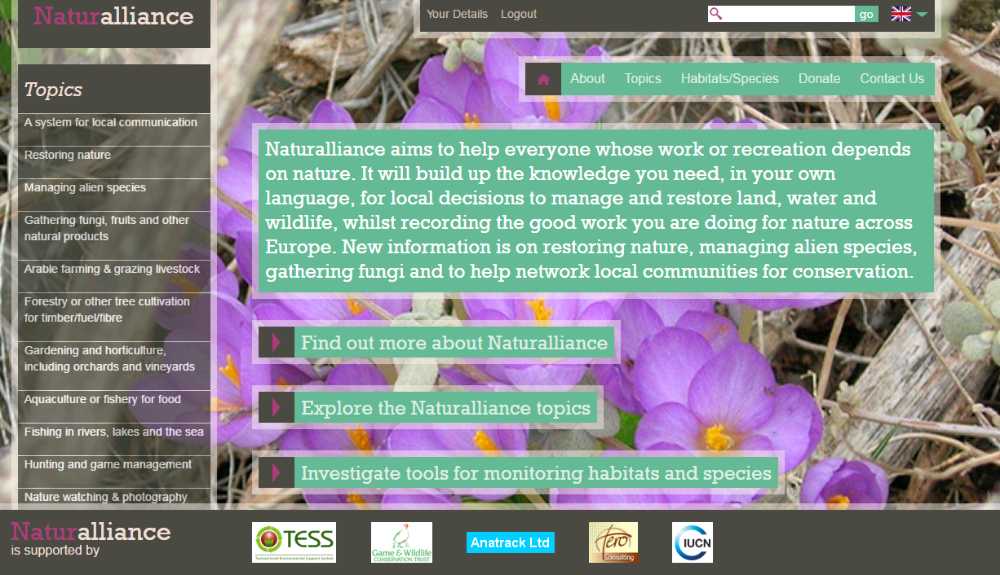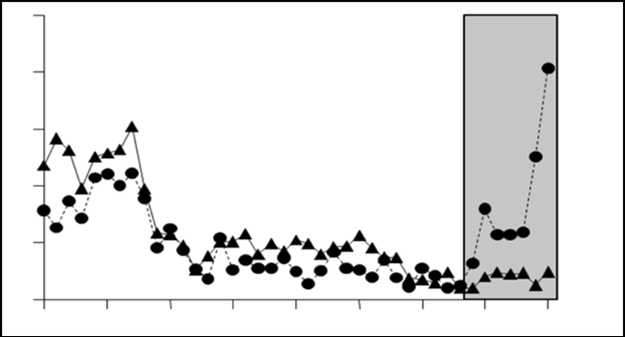Origins of this project

Clicking the image gives an expanded view of the 23-language site (use ← to return to the page)
For twenty years, groups in the International Union for the Conservation of Nature (IUCN) have worked with other organisations to conserve nature in ways that go beyond protection of species and areas. In 2002, a report for Council of Europe led to two projects for European Commission. The first of these allowed hunters, anglers, and gatherers of plant materials and fungi, to work together to show that the private spending on wild resources was as great as grants from the Common Agricultural Policy.
A second project showed the value of local communities, farmers, foresters and other land managers for conserving nature, and helped persuade European Commission to make restoration an important aim for 2020. The launching of a first website, to show in 23 languages how a variety of countryside activities could contribute (see link below), brought IUCN together with the Game and Wildlife Conservation Trust (GWCT) in UK and with the growing Wildlife Estates initiative of the European Landowners Organisation (ELO).
Our Reasoning

Falconers restored tree-nesting Peregrine Falcons
Another group which has worked for many years with IUCN is the International Association for Falconry and Conservation of Birds of Prey (IAF). Falconers pioneered restoration techniques in the 1970s, when birds of prey were threatened by pesticides. IAF has demonstrated cultural and conservation benefits of falconry to achieve recognition by UNESCO, and IAF’s members in 80 countries form the world’s largest volunteer network of clubs for enjoying wildlife as a sustainable resource.
IAF and IUCN are also working with BirdLife International and the Convention of Conservation of Migratory Species (CMS) on multilingual portals for local people across Asia to conserve the Saker Falcon. This work prompted the thought "How about sites to provide information on restoring natural richness across Europe too? Could this help all local communities across Europe engage in the improvement of their local environment and services from nature?" Let’s see!
Help us!
Do please spread the word about this site, which is intended for everyone who wishes to see not only Grey Partridges, but also wildflowers, butterflies, bees and many creatures thrive where partridges are found. To restore the riches of nature across Europe will need all of us to maintain and restore the field margins, road verges, parks and even gardens than can support such wildlife.
It can be done!

Measurements 2004-2010 (grey) for partridge pairs in area managed for grey partridge conservation (circles) vs control (triangles). (© GWCT)
The diagram shows restoration of a wild Grey Partridges on a Sussex estate through management based on GWCT research. The long-term decline in the area was completely reversed, while numbers remained low on a comparable area nearby.
To discover more about what we need to do, please look at the pages on this site about managing habitats and other species that affect Grey Partridges.
On the web
The website of the Game and Wildlife Conservation Trust has much useful information on partridges and other species.
You can join the fun by contacting the national Perdixnet in your country.
Have a look at ideas for conserving nature through many countryside activities.
This site is run by the International Association for Falconry and Conservation of Birds of Prey, supported by the International Union for Conservation of Nature and the Game and Wildlife Conservation Trust.